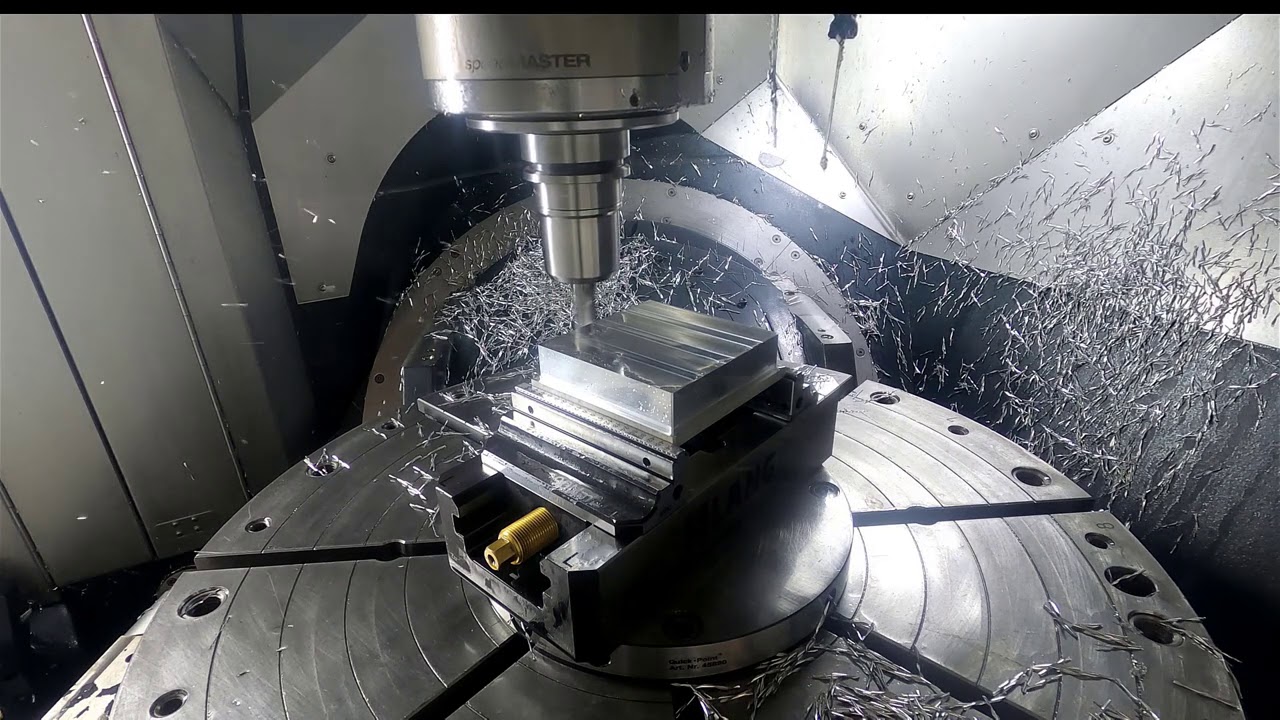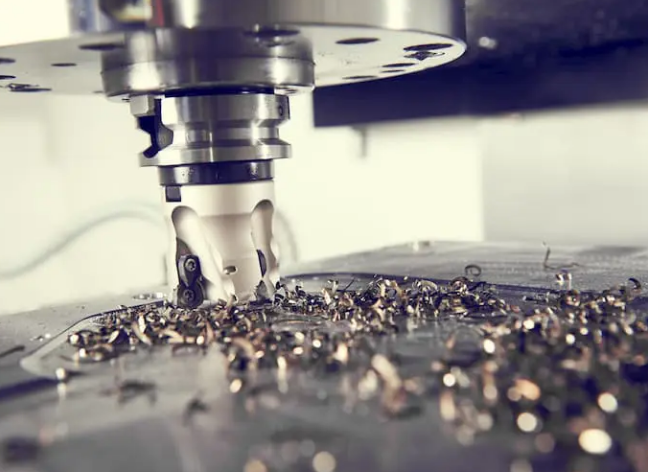Improve plastic CNC milling accuracy by selecting suitable materials, optimizing machine settings, using precise tools, controlling temperature, and employing advanced measuring instruments
Choosing The Right Plastic Material
Choosing the correct plastic is the foundation of achieving the precision of CNC milling operations. Material properties directly impact the machining process; for example, hardness, melting point, and impact strength. One particular example: PEEK (Polyether Ether Ketone) has been widely used due to its strong thermal stability and great mechanical properties, this is critical for high precision applications. PEEK is capable of holding within 0.005 inches, ideal for aerospace and medical applications, where tolerances are vital.
Analyzing Plastic Properties
It is important to know what materials & characteristics a plastic has. Materials such as Acetal are chosen for its low friction and high wear properties and are effective in the creation of accurate gears and movable parts. An in-depth property analysis that the property of the plastic is appropriate for the machinability.
Impact of Material Hardness
The plastic in turn is harder, making it more difficult to cut, and increases machining speed. The other materials such as PEEK, which is harder than HDPE (High-Density Polyethylene) would not use the same settings as HDPE. The closer the material hardness and the right CNC machine settings the more precise the milling accuracy.
Thermal Performance and Machinability
Plastics react differently to heat generated from milling. As a result, high-melting-point materials such as PEEK can be cut at faster speeds, more aggressively machined without deformation and receive milled finishes without additional processing. Milling parameters controlled according to thermal behavior enables better stability and precision during the milling process.
Moisture Absorption is Important
Certain plastics, such as Nylon, are hygroscopic and will change size when water is absorbed by the material during the machining process. For applications requiring a high level of dimensional stability, It is important to select materials which have a low moisture absorption. Drying these materials in advance can greatly minimize the precision of the final part.

Optimizing Plastic Machine Settings
The key to the greatest accuracy in CNC milling lies in the adjustment of the spindle speed to every single material of plastic. Softer plastics like LDPE need lower spindle speeds lest they melt and deform while harder ones like PTFE can have appreciably higher spindle speeds. LDPE processes optimally at spindle speeds of around 1000-1500 RPM, the low-end of the scale and drastically lower than the 2500 RPM optimal range for hardier plastics such as PEEK, which can handle speeds up to that extent without causing any detriment to accuracy.
setting feed rates to clean cuts
Controlling the cutting tool and plastic material interaction can allow the operation to change the feed rate. A feed rate that is too aggressive can result in a clogged tool and can cause surface finishes to go off the rails. Since precision parts usually need reduced feed rates. Experimental results demonstrate that dropping the throughput by 10–20% from standard values can increase surface finish and dimensional precision, particularly in complex designs.
Depth of Cut Considerations
Depth of Cut – This is the diameter of the tool, and it determines both the load on the tool as well as the quality of the finish of the surface of the milled area. By reducing the depth of cut, you can also minimize deflection and vibration, and have more accurate cuts. To obtain control and accuracy while milling, industry standards suggest a depth of cut up to 0.2 inches per pass for plasticaceous materials such as polycarbonate.
Good Practices for Proper Chip Removal
CNC milling requires good chip evacuation for process accuracy. Chips can recut and weld to the part or can get jammed in the cutter path that can lead to inaccuracy. Air blasts or specialized vacuum systems can also be used to suck chips out of the work area, providing a clean cutting environment and increased precision of the mill.
Calibrate Regularly To Stay On The Top Of Your Game
CNC Machine calibration is a mandatory and indispensable step for achieving higher precision in plastic milling. Calibration is the process of adjusting the machine’s geometric, positional and motion settings to within manufacturer-specified tolerances. This would prevent the positioning accuracy from falling by more than 0.0005 as is required for high precision manufacturing – (e.g., recalibration every 300 hours of operation at a CNC machine).
Tool Selection and Maintenance
It is very important in plastic CNC milling to maintain high precision, and choosing the right cutting tools is one of the determining factors. Single-flute end mills and similar plastics-specific tools will help avoid this localized melting and improve the chip extraction process. Another key example is when milling soft plastics like LDPE, a single-flute end mill with a sharp edge and high rake angles will prevent heat build-up, reducing that burned crud you tend to get with soft plastics revenues its integrity.
Effect of Tool Material on Machining Accuracy
The type of material that the tool is made of also has a major role to play in terms of machined quality. The reason for the use of solid carbide tools is usually because of the hardness and wear resistance required to maintain a workpiece at the dimensions which are needed after the tool has been in use for a prolonged period of time: the wear resistance helps to ensure both that the workpiece shape is maintained over time, and that the shape and size of it are within required tolerances from the beginning. Experiments have revealed that, at relevant conditions, carbide tools can hold their precision five times longer than high-speed steel tools can when cutting abrasive plastics like fiberglass-reinforced polymers.
Tool Maintenance Practices
To avoid the quality of cutting getting declined, all the tools should be checked with a regular maintenance. Establishing a regular schedule to check and swap out tools gone dull can significantly improve the quality of your CNC machining. A mere 10% tool wear, for example, can result in a surface finish error of as much as 20%, to the point where the (dimension) tolerances on the finished part are no longer able to be maintained. Tools must be checked every 10 hours of use and be resharpening or replacing to maintain the performance of your tools.
Desingning poiychromatic optics for Abbe compensation
The tool geometry, such as the angle of the cutting edges, the number of flutes, and the helix angle, will need to be amended according to the plastic type. The latter tend to offer more consistent material removal rates on stiffer materials, like PEEK and Nylon, especially when using smaller-diameter tools with, which can be a challenge for a stub and/or uncoated end mills to evacuate chips effectively at higher cutting depths.
Design Features to Manage Temperature
When working with thermally sensitive plastics, polished flutes or tools with through coolant can help alleviate heat buildup in the milling process, which can play as big a role as proper part setup. These characteristics keep the heat at the cutting zone to a minimum assuring the properties of the material and precision of the CNC processes.
Temperature Control During Milling
Plastic has a low melting point so it requires precision heat management when it comes to milling. Too much heat can cause the plastic to warp or melt, and this can affect the accuracy of the finished item. By way of example, when machining acrylic work-pieces, very hot temperatures may easily be accomplished just before the resin starts to pyrolize, which tYPically transpires at roughly 160°C. A dry environment beneath this limit is important in order to ensure the part is still capable of holding its design.
Ways to Keep the Eggs Safe and Sound
This means that applying cooling during milling to prevent the temperature to rise is mandatory. Compressed air cooling systems, in this respect, are largely effective since they can lower the cutting area temperature by 50%, which helps to preserve the physical properties of the plastic. For example, the method is ideal for filaments like Nylon, which is very prone to warp under the heat impact.
Selection of Cutting Fluids
A Menzerna-clear cutting fluid, for instance, may prove beneficial in some situations, even as many plastics are machined dry to avoid chemical reactions with coolants. The choice of the fluids is due to their compatibility with the plastic so as not to swell or deteriorate the material. For instance, a water-soluble coolant can be used with polycarbonate as it aids in better heat dissipation without changing the material composition.
Best Feed Rates and Spindle Speeds
Feed rates and spindle speeds can also be adjusted to reduce the heat generated during milling. Higher feed rates reduce contact time between the cutter and material, which decreases heat build-up. While materials such as PEEK will not respond well to the same high feed rates as graphite, finding the right balance of high feed rates and lower spindle speeds can prevent the material for melting and provide cleaner, sharper edges.
Advanced Milling Strategies
Advanced milling strategies such as climb milling will also help in temperature control. The process makes the fine slicing action better, for less friction so less heat is produced. For instance, one of the reasons we use climb milling on materials like HDPE is because it can provide a better surface finish and improved accuracy by keeping the plastic cooler during processing.

Utilizing Precision Measuring Tools
Choosing the right sort of measuring tools actually has a significant impact on the accuracy in the CNC milling of plastics. Calipers, micrometers, and laser scanners are some of the tools used to achieve the required level of precision for these different techniques. First, micrometers can provide accuracy to 0.0001 inches, which means that they can accurately measure the thickness of thin plastic components where exact dimensions are paramount.
In-Line Measuring System Integration
In-process measuring systems such as touch probes go a long way toward improving the accuracy of high-precision CNC operations. These work measurement systems can keep real-time records as the work progresses and will automatically correct the process, should any variations be detected, whilst the work is being milled. In process measurements have been proven to reduce dimensional error between up to 30%, so every part is made to print.
periodically calibrated
The accuracy and repeatability of measuring tools can be maintained by calibrating them on a regular basis. Calibration shall be made in accordance with the recommendations of the manufacturer or at intervals based on use and working conditions. So, in a high-volume production scenario, calibration could be periodic say every month and on the other hand, bi-annual calibration can be used for a less intensive setting.
How Statistical Process Control (SPC) works
The use of SPC (Statistical Process Control) can be applied as a means to monitor and control the quality of the CNC-milled parts. This is done using statistical methods by SPC to check for uniformity in the manufacturing process and signify if improvements can be made at any level. Manufacturers can also detect small changes in the machining process long before they have an impact by analyzing data collected from precision measuring tools.
Sophisticated Optical Measurement Techniques
3D scannin Advanced optical measurement techniques allow intricate parts to be measured in fine detail and with high accuracy. These technologies are beneficial for confirming critical dimensions on complex profiles and for ensuring that the parts machined meet tight tolerance specifications. 3D laser scanning, for instance, allows for the capturing of the entire geometry of a part with micrometer accuracy thus giving us a thorough body of data about the finished product vis-a-vis its CAD model.








